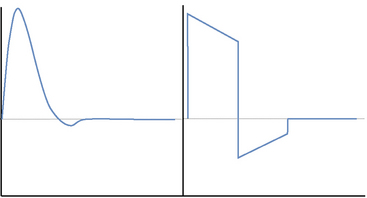Chapter 53 Cardioversion and Defibrillation
INTRODUCTION
Specifically, defibrillation refers to an unsynchronized impulse delivered in an effort to abolish ventricular fibrillation or pulseless ventricular tachycardia and is a key component of advanced life support and cardiopulmonary resuscitation (CPR) (see Chapter 4, Cardiopulmonary Resuscitation). In comparison, synchronized cardioversion refers to an impulse that is delivered during a specific portion of the cardiac cycle to terminate a symptomatic supraventricular or ventricular arrhythmia.
EQUIPMENT
Monophasic Versus Biphasic Waveforms
Two types of defibrillators are available: monophasic and biphasic. These differ by the shape of the waveform that is generated by the defibrillator. Monophasic defibrillators generate a single positive current, and biphasic defibrillators generate a positive followed by a negative current (Figure 53-1). The bidirectional energy flow produced by biphasic defibrillators allows lower energy settings to be employed, and there is evidence suggesting that this technology allows for more efficient defibrillation with less myocardial damage.2 Although biphasic defibrillators are becoming more common in human medicine and recommendations for energy settings have been incorporated into human CPR guidelines,3 monophasic defibrillators are much more common in veterinary hospitals. Accordingly, guidelines for energy settings in small animal patients are based on defibrillators with monophasic waveforms.4
Stay updated, free articles. Join our Telegram channel

Full access? Get Clinical Tree



